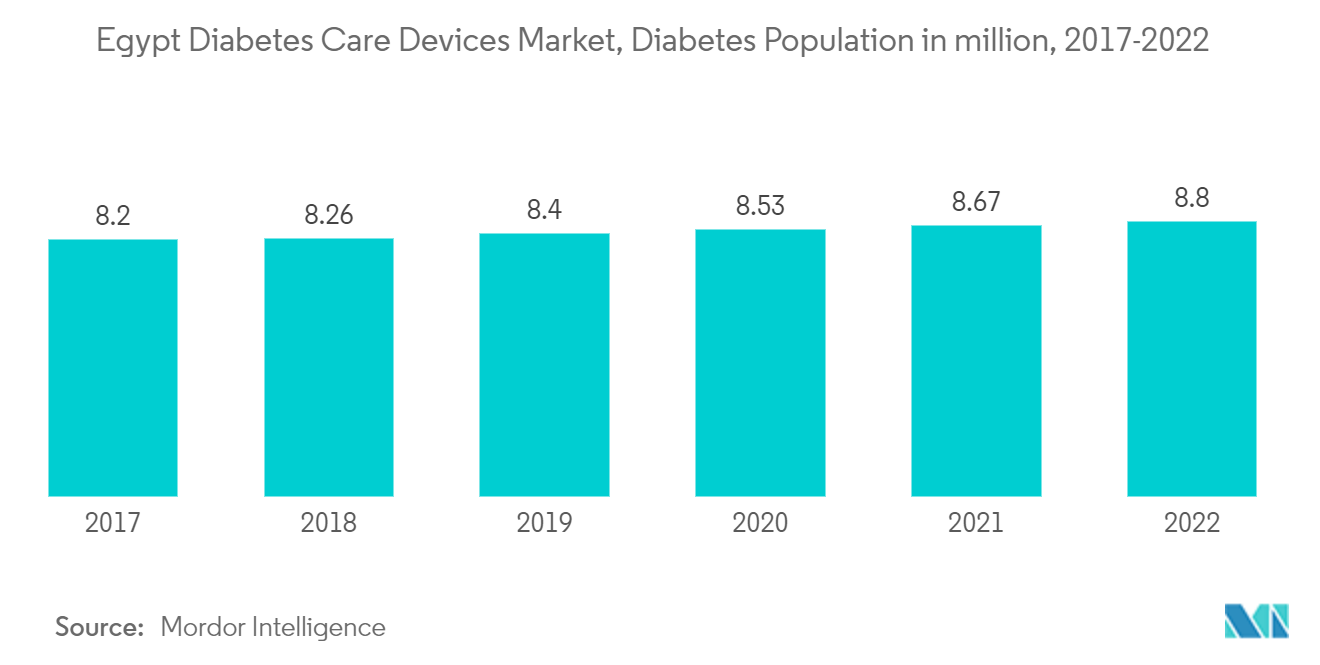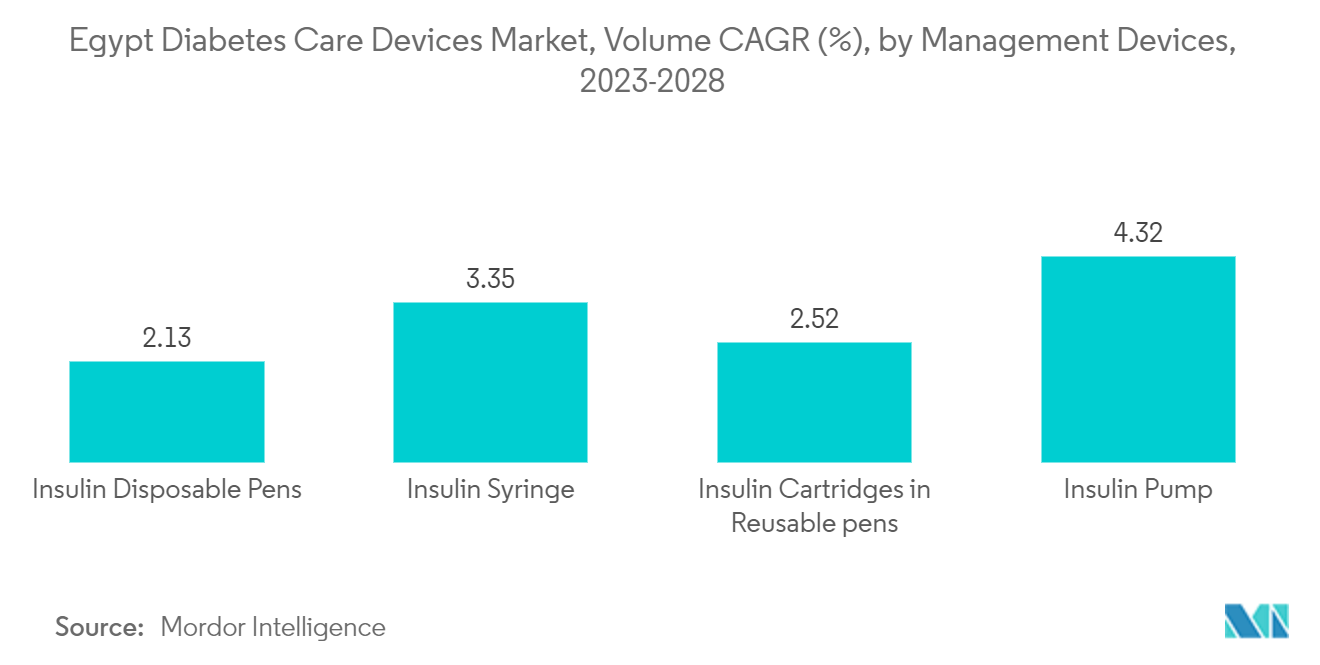Market Trends of Egypt Diabetes Care Devices Industry
Continuous glucose monitoring segment is expected to witness highest growth rate over the forecast period
The continuous Glucose Monitoring Segment is expected to witness a CAGR of 12% over the forecast period.
A CGM is used by inserting a small sensor into the abdomen or arm with a tiny plastic tube known as a cannula penetrating the top layer of skin. An adhesive patch holds the sensor in place, allowing it to take glucose readings in interstitial fluid throughout the day and night. Generally, the sensors must be replaced every 7 to 14 days. A small, reusable transmitter connected to the sensor allows the system to send real-time readings wirelessly to a monitor device that displays blood glucose data. Some systems have a dedicated monitor, and some display the information via a smartphone app.
Continuous glucose monitoring sensors use glucose oxidase to detect blood sugar levels. Glucose oxidase converts glucose to hydrogen peroxidase, which reacts with the platinum inside the sensor, producing an electrical signal to be communicated to the transmitter. Sensors are the most important part of continuous glucose monitoring devices. Technological advancements to improve the accuracy of the sensors are expected to drive segment growth during the forecast period.
The frequency of monitoring glucose levels depends on the type of diabetes, which varies from patient to patient. Type-1 diabetic patients must check their blood glucose levels regularly, monitor their blood glucose levels, and adjust the insulin dosing accordingly. The current CGM devices show a detailed representation of blood glucose patterns and tendencies compared to a routine check of glucose levels at set intervals. Furthermore, the current continuous glucose monitoring devices can either retrospectively display the trends in blood glucose levels by downloading the data or give a real-time picture of glucose levels through receiver displays. Such advantages helped the rise in the adoption of these products in the market.
The major risk observed among the Egyptian population is unhealthy diet, sedentary lifestyle habits, and a family history of diabetes. The Egypt blood glucose monitoring market grew to monitor glycosylated hemoglobin levels. Most diabetic patients in Egypt use blood glucose monitoring devices to control blood glucose levels and their fluctuations. Thus, because of the high diabetes prevalence and technological adaptation, the market is growing in Egypt.

Insulin disposable pens hold the highest share in the management devices segment in the current year
Insulin Disposable pens hold the highest share of about 37% in the management devices segment in the current year.
A disposable insulin pen contains a prefilled amount of insulin. When the pen is empty, it is thrown away. Insulin pens are much smaller and more portable than syringes, containing the medicine preloaded into the delivery mechanism. The needles are easy to use and can be disposed of by twisting or snapping. The pens are usually color-coded, making it easier to know which type of insulin and how much it will be received from them. The disposable insulin pens are considered more consumer-friendly, as they are smaller and less noticeable than the classic vial-and-syringe. These devices are also more portable for consumers on the go. Some pens are smart insulin pens that easily connect to an app on the phone to monitor blood sugar levels and remind when to take the next insulin dose.
In Egypt, the social level plays an important role in patients' access to health care since the number of healthcare centers, hospitals, and pharmacies is very low in rural areas compared to big cities and urban areas. The financial level is a major determinant of people's access to health care, as the salaries of most of the employees in Egypt are not enough to afford their monthly diabetes supplies. For students and school children with type 1 diabetes, the National Health Insurance System covers insulin, and the student pays nothing for NPH, mixed and short-acting insulins, and only 60% of the price of other types of insulin, which are usually unavailable in the pharmacies of the National Health Insurance System. However, the government is working in the direction of improving the access of patients through various initiatives.
The Egyptian Government Launched the '100 million Seha' initiative, which seeks to screen Egyptians for non-communicable diseases like diabetes. Various healthcare companies announced their collaboration with the Egypt Ministry of Health to promote the initiative. Such initiatives are expected to create awareness among the people regarding monitoring and controlling diabetes, thereby enhancing the market prospects in the coming years.

